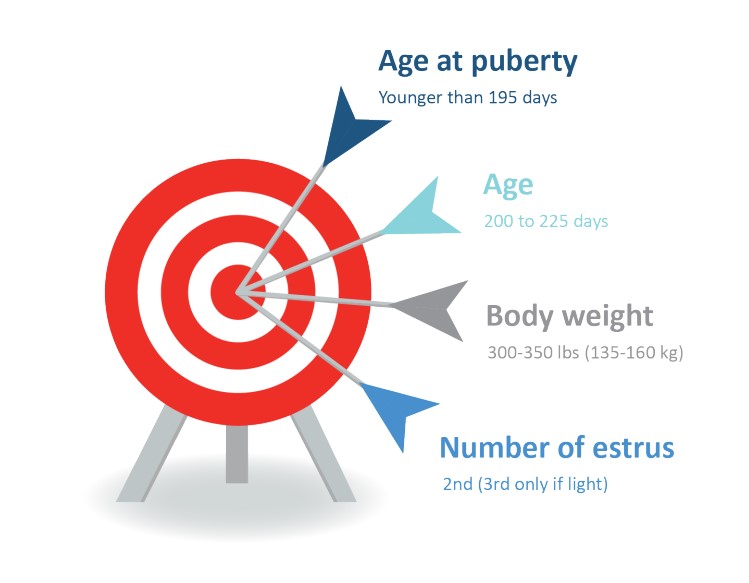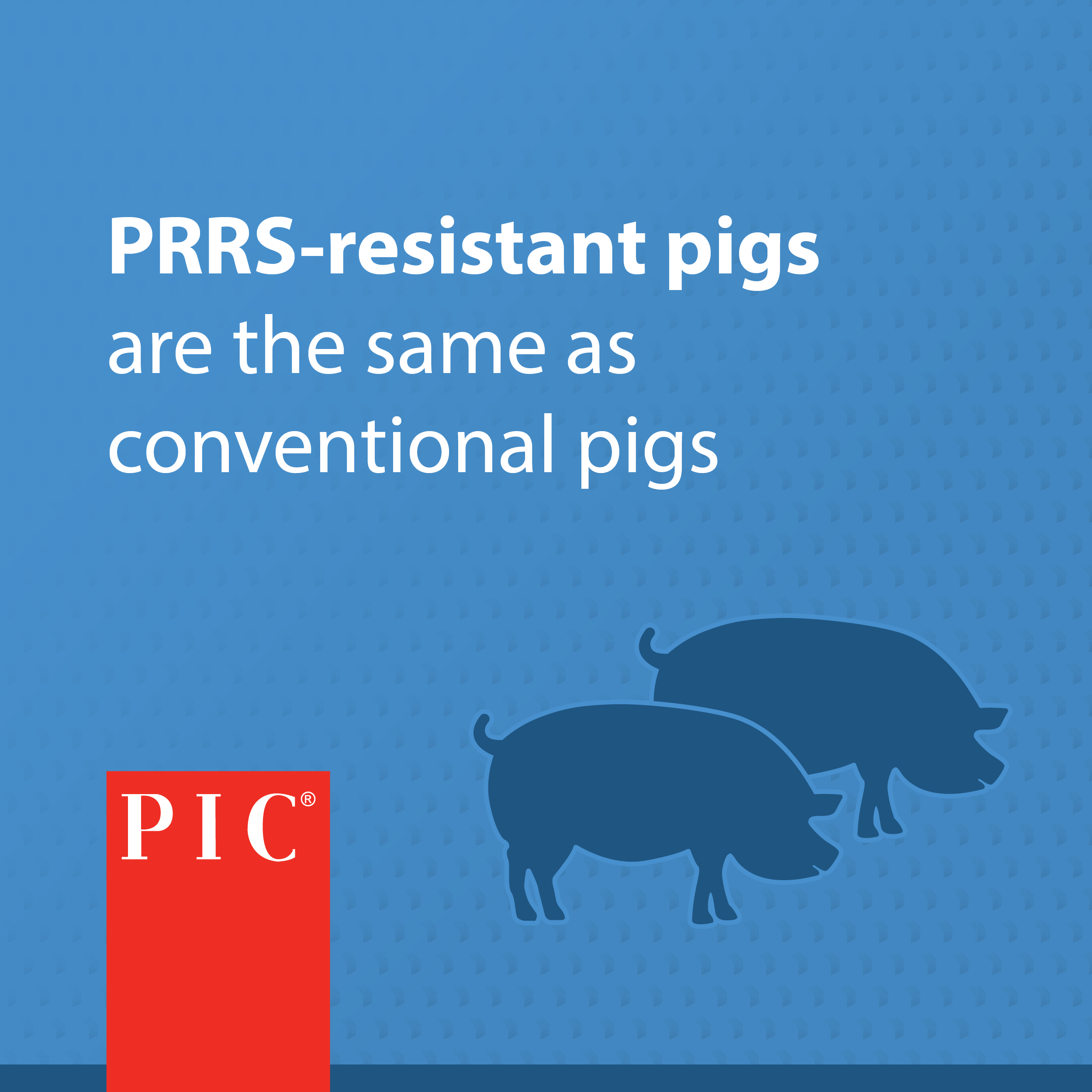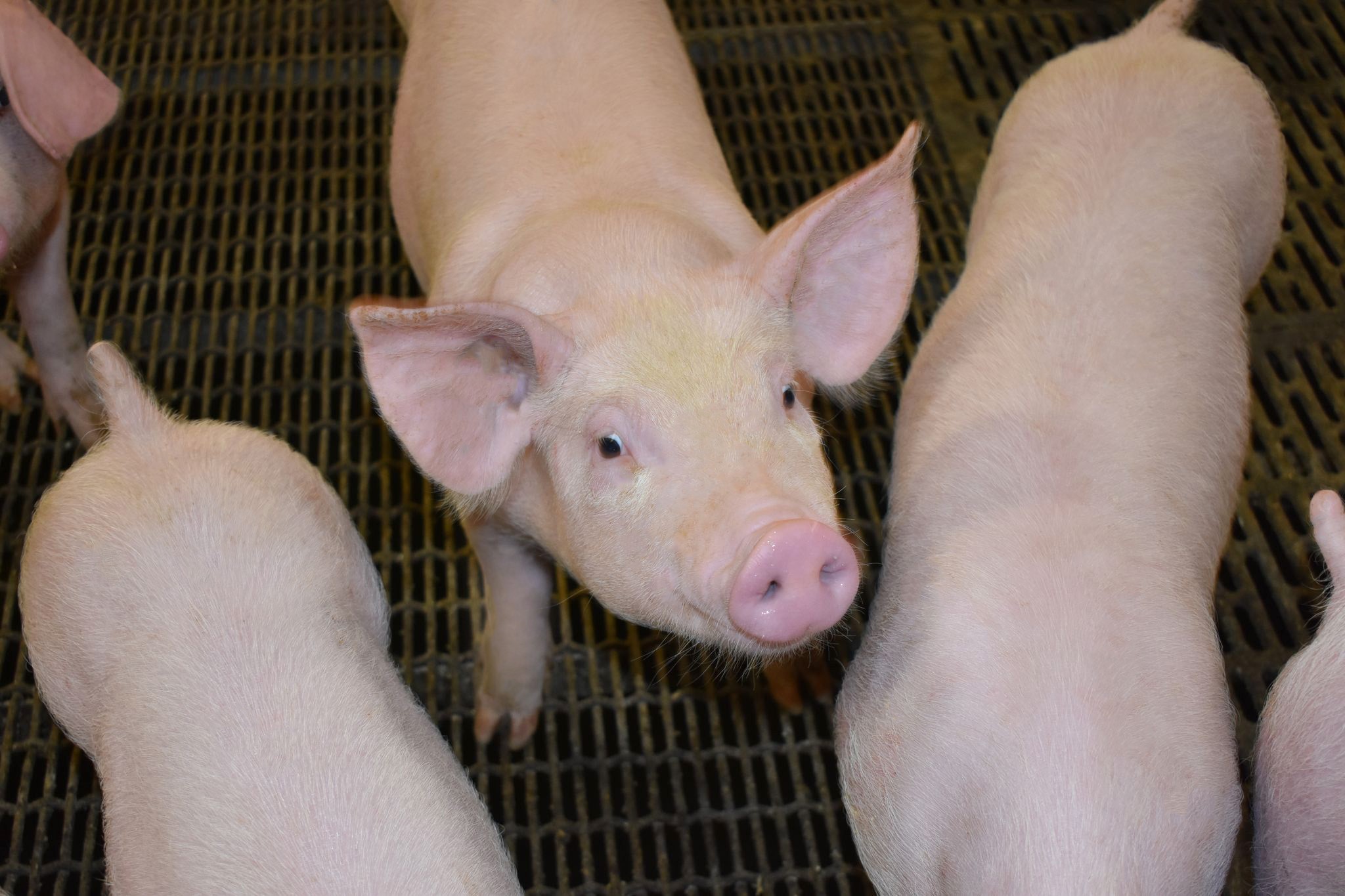By Juan Carlos Pinilla, North America Regional Tech Service Director, PIC
Hit gilt development targets for best lifetime performance, cost savings
As swine genetics advance, so do parameters for gilt eligibility at first breeding. Meeting eligibility requirements for gilt development sets gilts up for a successful first parity and subsequent parities for maximum lifetime performance.
PIC defines gilt eligibility using these four components:
- Age at puberty
- Age at first breeding
- Bodyweight at first breeding
- Number of estrus at first breeding
Each of these components includes specific targets for breeding gilts. Hitting all targets on each gilt serviced is vital to optimize cost-efficiency, longevity and lifetime performance. Each target is equally important. PIC research shows meeting just two or three of the four targets will not have the same positive results.

Age at puberty: Target breeding gilts that reach puberty before 195 days of age
Industry research confirms a link between early sexual maturity and improved sow lifetime productivity. Manage gilt development to stimulate an early puberty onset and identify and record the gilts in estrus. Gilts expressing puberty younger than 195 days (28 weeks) of age tend to have higher lifetime performance.
Age at first breeding: Target gilts between 200 to 225 days of age
In general, open gilts over 225 days of age are likely overweight. Breeding open gilts over 240 days can result in a decrease in litter size in second parity, longer wean-to-service interval and a shorter production life overall.
The PIC Camborough® can be bred at 210 days and 300 lb, up to 50 days sooner than competitor gilts. With a short wean-to-estrus interval, she can drive your herd efficiency with more lifetime production days.
Body weight at first breeding: Target 300 to 350 lb (135 to 160 kilograms)
Breeding gilts between 300 and 350 lb supports ideal weight at farrowing and overall lifetime maintenance demands. Their average daily gain should be between 1.32 and 1.76 lb (600-800 grams) per day to reach the target weight between 200 and 225 days.

Breeding gilts below the target weight results in smaller litters at first farrowing and decreased performance potential during the first lactation. Gilts heavier than 350 lb (160 kilograms) at first breeding are likely to remain heavy and will be more expensive to maintain in the herd. Heavier gilts are prone to locomotion issues in subsequent parities.
Weight is often the most challenging component of gilt eligibility. In collaboration with Kansas State University, PIC developed an easy-to-understand and action-driven “flank to flank” tape to help determine if a gilt is within the ideal weight range. The tape features a red, amber, and green color code and associated action for quick decision-making.
Number of estrus at first breeding: Target breeding gilts on second estrus
Accurately track estrus and breed on the second estrus. PIC research shows delaying breeding gilts to the second estrus has a positive effect on litter size. Only delay breeding gilts to the third estrus to meet minimum weight targets.
Entering the breeding herd is a crucial step for gilts and can be a make-or-break event that determines future performance. Focusing on these four factors of gilt development – age at puberty, age at first breeding, bodyweight at first breeding and number of estrus – will help start gilts on the right path.
The PIC Camborough® reaches puberty sooner compared to competitor gilts. As a result, the Camborough® drives sow herd efficiency with more productive days in her lifetime.





